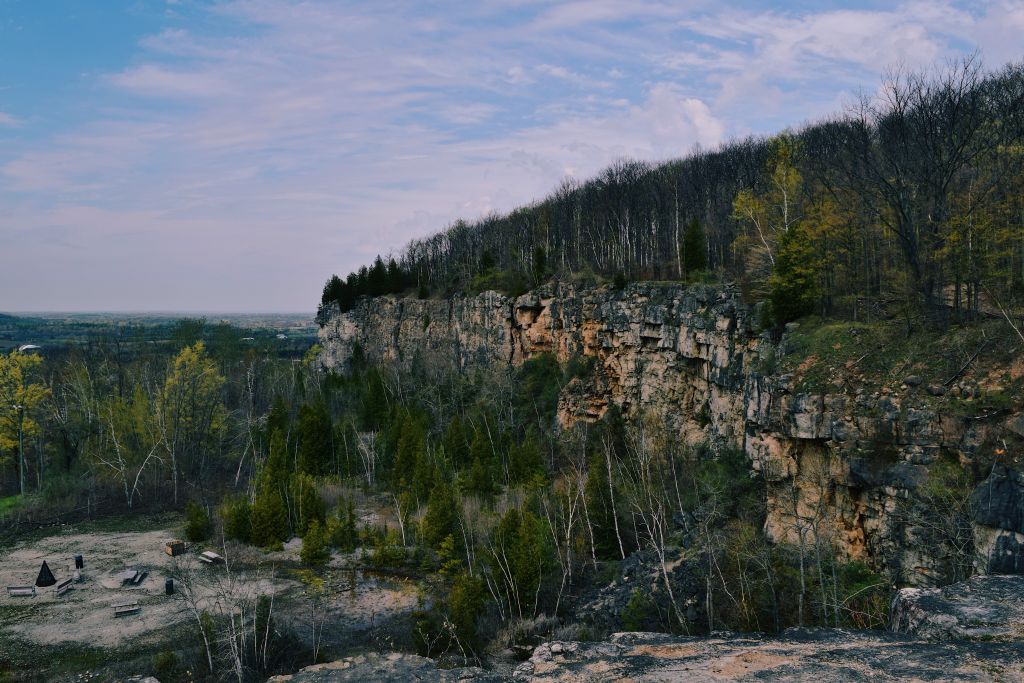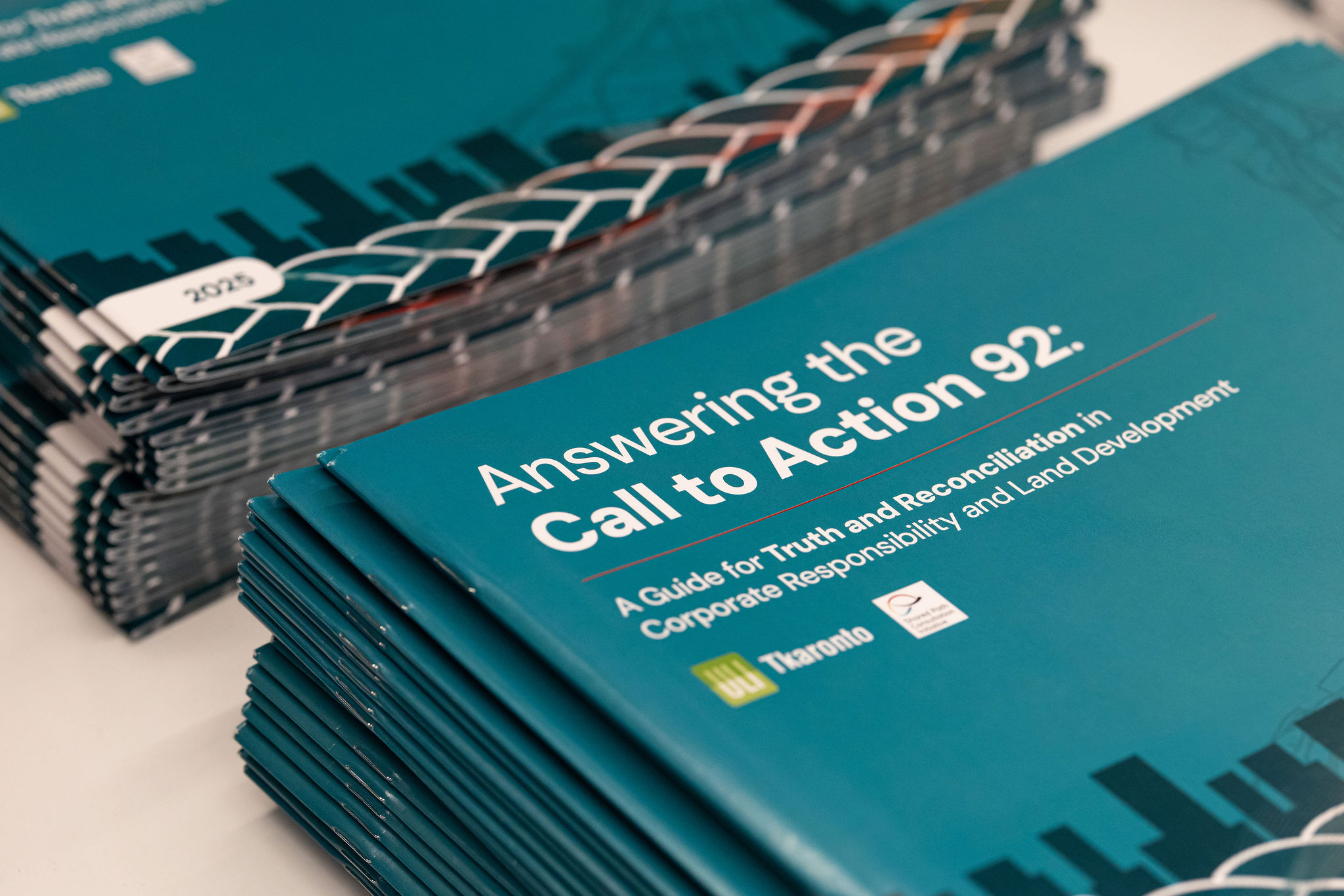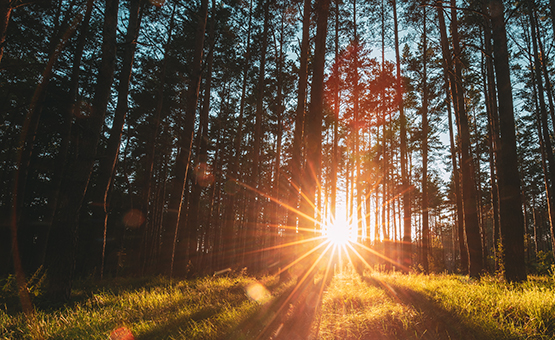Loving our Landscapes
Written by Carmichael, Dali •
I’ve moved homes over 25 times in my 30 years on this planet. By the time I was about 5 or 6, I learned to lock in many details of the property in my mind’s eye before I would inevitably move on – the intricate design of iron grates that allowed you to spy on the room below; the crisp sensation of fall settling in while we kids ran through the cornfields that were our backyards; the delight of finding a secret cave along the karst topography that makes up much of the Niagara Escarpment, our imaginations firing over what could possibly live within.
Being in these spaces and interacting with these familiar details triggers memories that I always carry with me, but may neglect when I am in other spaces. There’s only one place from my childhood that I can still access to this day, a cottage that belongs to my father’s in-laws. For 40 odd years, a trip to this cottage has never been complete without at least one visit to the crystal clear shores of Lake Huron and clambering up the silky, white sand dunes that line the roads. In the last few years, we’ve also started a new tradition: harvesting morel mushrooms that appear early in the summer, adding new layers of love and appreciation for all this parcel of land has given us.

At Shared Path we’ve decided that one of our research and advocacy avenues might be to explore landscapes not just as places of beauty to enjoy for current populations, but as specific, identifiable places that hold memory and significance, that connect us to past generations, and that we would like to share with future generations.
A policy mechanism we would like to focus on is the use of cultural heritage landscapes (CHLs) as a tool for heritage conservation initiatives.
These mechanisms have been used globally in one form or another since at least 1972, when the World Heritage Convention at the United Nations allowed for the creation of the World Heritage List, a catalogue of places that identified as being universally valuable for geographical and cultural reasons. This convention is unique in that it links the concepts of nature conservation and the preservation of cultural properties, and identifies a need to maintain balance between the two.
In 1992 the World Heritage Convention became the first international legal tool that could be used to recognise and protect cultural landscapes, providing a layer of protection from development and other activities that would alter the space in question.
Here in what is now called Canada, efforts to conserve our landscapes have been directed towards those spaces that hold resources deemed valuable because of their usefulness, either as beautiful “untouched” spaces to enjoy, or as future sites for extractive activities. Think Banff or Algonquin National Park.
Other heritage conservation approaches at the provincial and municipal level tend to place emphasis on the significance of the built form. Slowly, slowly, that is starting to change.
In Ontario, the 2020 Provincial Policy Statement recognizes that conservation of significant cultural heritage landscapes both establishes a sense of place and supports long-term economic prosperity. Cultural heritage landscapes are defined as geographical areas “that may have been modified by human activity and (are) identified as having cultural heritage value or interest by a community, including an Indigenous community. The area may include features such as buildings, structures, spaces, views, archaeological sites or natural elements that are valued together for their interrelationship, meaning or association. Cultural heritage landscapes may be properties that have been determined to have cultural heritage value or interest under the Ontario Heritage Act, or have been included on federal and/or international registers, and/or protected through official plan, zoning by-law, or other land use planning mechanisms.”
The use of the phrase “valued together for their interrelationship” seems to suggest an important shift in perception concerning land/space: away from a Western worldview intent on isolating, categorizing, and evaluating individual entities, towards a more Indigenous worldview that recognizes the interconnectedness of all beings and the importance of the relationships that bind them.
In Towards Braiding, Elwood Jimmy and Vanessa Andreotti use a helpful analogy of bricks versus threads to describe these differing worldviews.
“Brick sense and sensibilities stand for a set of ways of being that emphasize individuality, fixed form and linear time; where the world is experienced through concepts that describe the form of things and places them systematically in ordered hierarchical structures.” Alternatively, “thread sense and sensibilities stand for a set of ways of being that emphasize inter-wovenness, shape-shifting flexibility and layered time;…where every entity is valued for its intrinsic (insufficient and indispensable) inherent worth within an integrative and dynamic whole.”
We want to learn more about Indigenous perspectives on land use. This framework allows us to work in ways that include important relationships Indigenous peoples hold with the land that are not centred on what it provides, but also how it is stewarded and protected. CHLs represent a policy tool with the potential to reframe our relationship to place while adhering to Indigenous Knowledge frameworks.
Over the next few months Morgan (Shared Path Executive Director) and I will be sharing our lessons learned, thoughts, and resources with you as we learn how CHLs factor into Shared Path’s work. We are not experts, but we will have guidance from experienced Cultural Heritage Specialists at Archaeological Service Inc. and Shared Path board members. The Truth and Reconciliation Commission and its calls to action encourage our society to learn our shared histories before acting on decisions that will influence our futures. This project is an opportunity for us to learn and reflect about both Indigenous cultural heritage and the political systems that determine how land is used and who gets a say in those decisions.
Have something to say about any of our posts? We invite critiques and corrections, as well as submissions. We hope you’ll learn something right along with us.
Dali Carmichael, Project Coordinator
For further reading, check out:
Elwood, Jimmy; Andreotti, Vanessa; Stein, Sharon. Towards Braiding. https://musagetes.ca/wp-content/uploads/2019/07/Braiding_ReaderWeb.pdf
Prosper, Lisa. Wherein Lies the Heritage Value? Rethinking the Heritage Value of Cultural Landscapes from an Aboriginal Perspective. http://www.georgewright.org/242prosper.pdf
MMAH. Provincial Policy Statement 2020. https://www.ontario.ca/page/provincial-policy-statement-2020
UNESCO. The World Heritage Convention. https://whc.unesco.org/en/convention/
UNESCO. Cultural Landscapes. https://whc.unesco.org/en/culturallandscape/#1
This article is brought to you by the Ontario Trillium Foundation’s Resilient Communities Grant. We thank them for their ongoing support!




